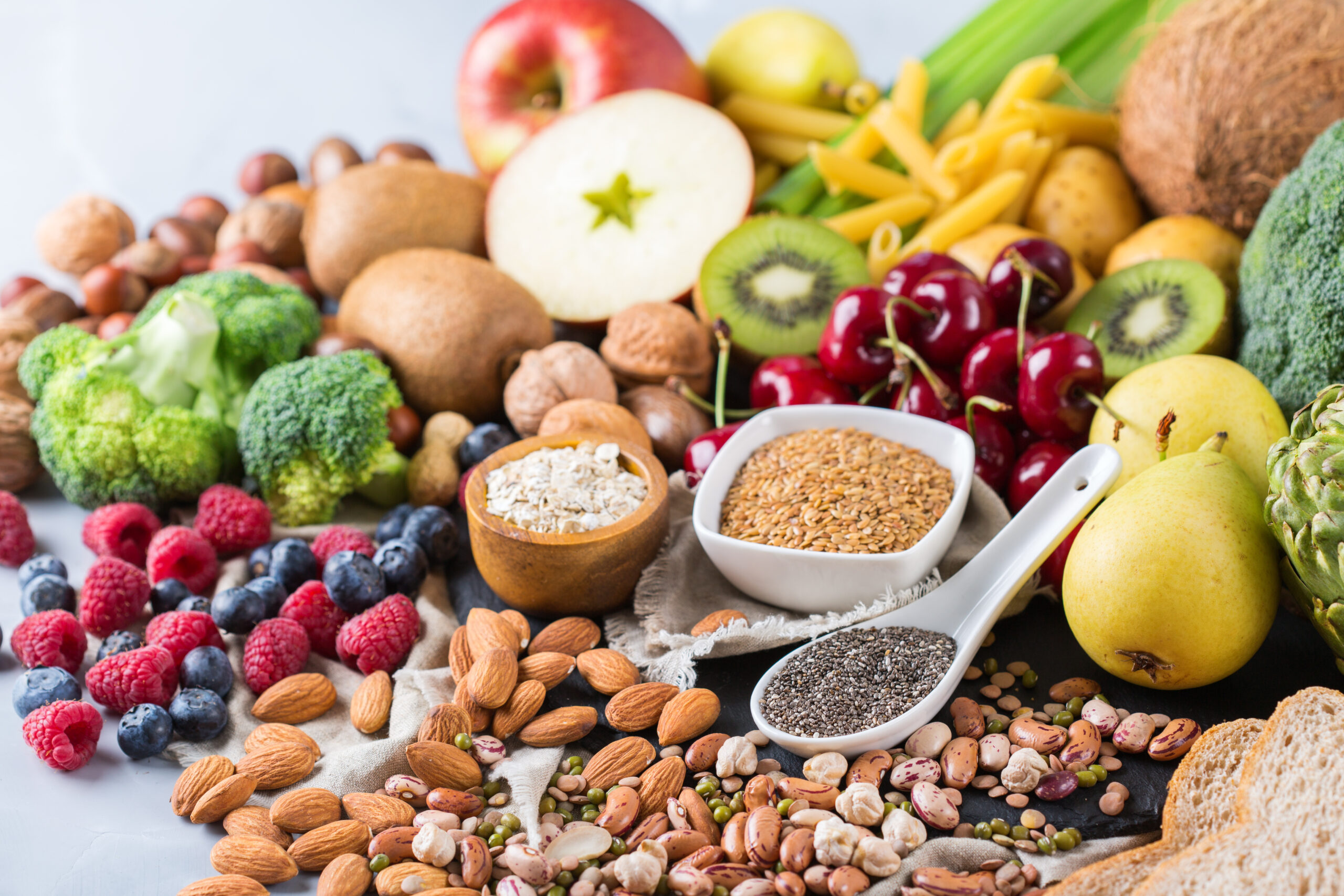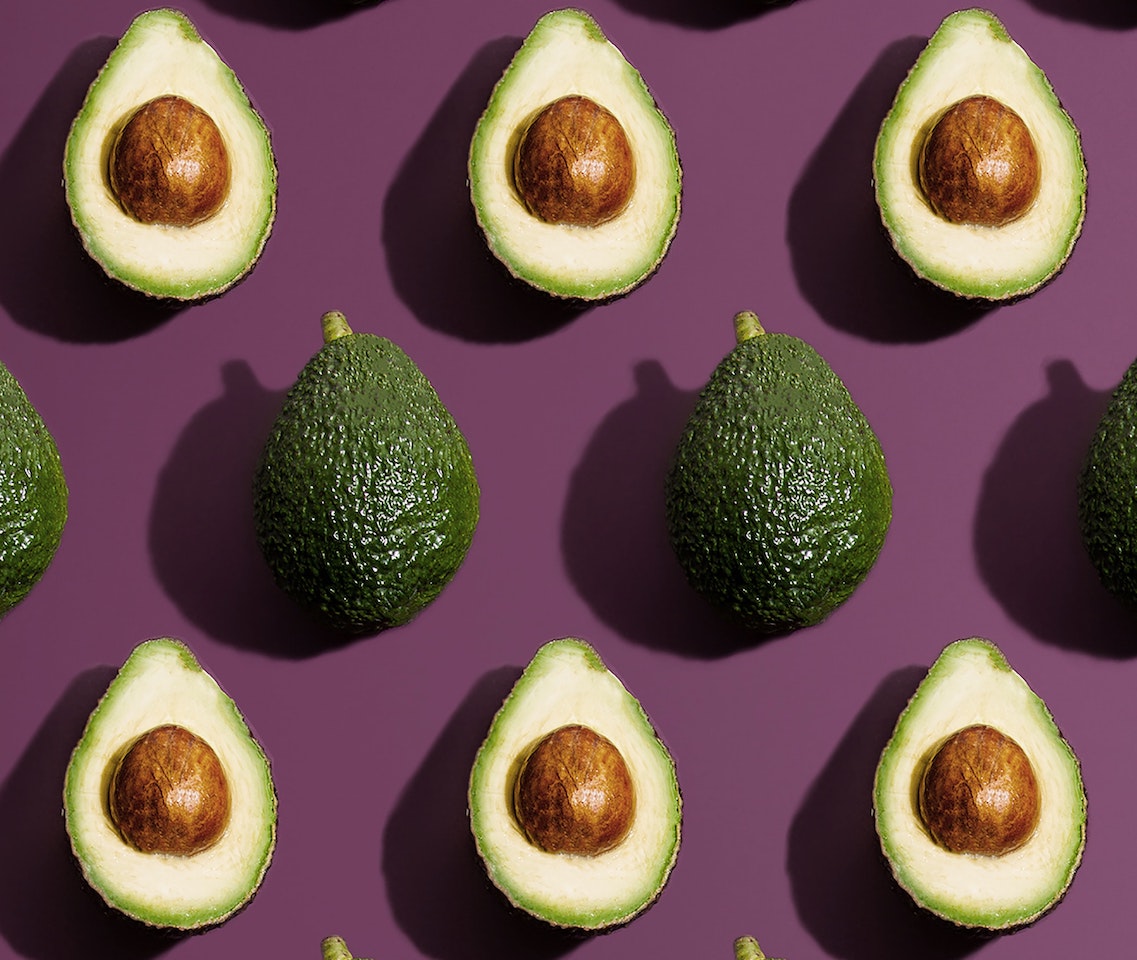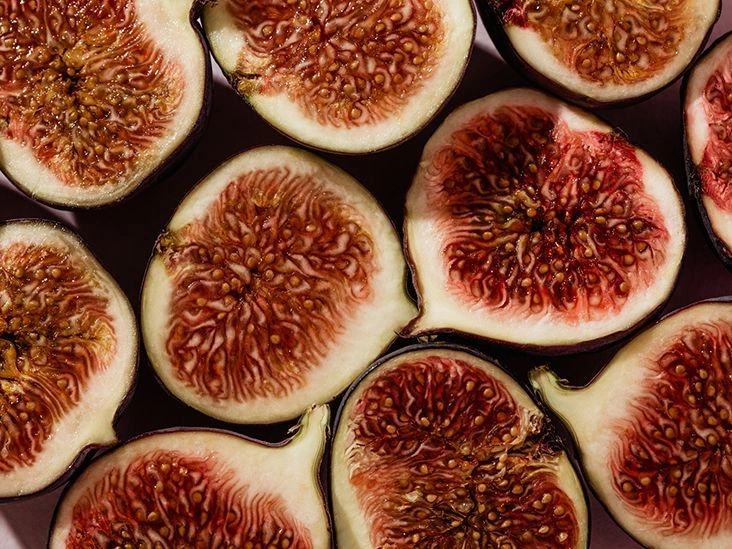Certain beans, fruits, seeds, and whole grains are excellent sources of soluble fiber. They support digestive wellness, help you stay satisfied, and promote regular bowel movements.
Dietary fiber is the plant carbohydrate that your body cannot break down.
Although fiber is vital for gut and general health, many people fall short of the recommended daily amounts — about 25 grams for women and 38 grams for men (1, ).
Both soluble and insoluble types of fiber increase stool bulk and can nourish beneficial bacteria in your colon.
Soluble fiber attracts water into the digestive tract, which softens stools and promotes regularity. It helps extend feelings of fullness, relieves constipation, and may also reduce cholesterol and blood glucose levels.
Below are 20 nutritious foods that are particularly rich in soluble fiber.

Beans
Black beans
Black beans not only add a meaty texture to meals but are also an outstanding fiber source.
A single cup (172 grams) contains 15 grams of fiber — roughly what many people consume in a day, and equivalent to 40–60% of the adult RDA (, 4).
They provide pectin, a soluble fiber that becomes gel-like in water. This can slow gastric emptying and keep you feeling full for longer, allowing more time for nutrient uptake.
Black beans are also high in protein and iron, low in calories, and nearly fat-free (4).
Soluble fiber content: 5.4 grams per 3/4 cup (129 grams) of cooked black beans (6).
Lima beans
Lima beans, sometimes called butter beans, are large, flat, greenish-white legumes.
They’re primarily sources of carbohydrates and protein, with minimal fat.
Although they contain less total fiber than black beans, their soluble fiber amount is nearly the same. Lima beans also supply pectin, which is linked to smaller blood sugar spikes after eating.
Note: raw lima beans are toxic and must be soaked and boiled before consumption.
Soluble fiber content: 5.3 grams per 3/4 cup (128 grams) of lima beans (6).
Kidney beans
Kidney beans are named for their distinctive kidney-like shape.
They’re staples in dishes like chili and are rich in fiber, complex carbs, and protein. They’re low in fat and supply some calcium and iron (19).
Kidney beans are a solid source of soluble fiber, especially pectin.
Some individuals find beans difficult to digest — if so, increase your intake gradually to reduce bloating.
Soluble fiber content: 3 grams per 3/4 cup (133 grams) of cooked kidney beans (6).
Vegetables
Brussels sprouts
People tend to either love or dislike Brussels sprouts, but regardless, they’re loaded with vitamins, minerals, and several cancer-fighting compounds.
Brussels sprouts also provide substantial fiber — about 4 grams per cup (156 grams) (8).
The soluble fiber in Brussels sprouts feeds beneficial gut microbes, which produce vitamin K, B vitamins, and short-chain fatty acids that support the intestinal lining.
Soluble fiber content: 2 grams per 1/2 cup (78 grams) of Brussels sprouts (6).
Sweet potatoes
Sweet potatoes are root vegetables rich in potassium, beta-carotene, B vitamins, and fiber. One medium sweet potato supplies over 400% of the Reference Daily Intake (RDI) for vitamin A (12).
On average, a potato provides about 4 grams of fiber, nearly half of which is soluble (12).
Thus, sweet potatoes can meaningfully boost your soluble fiber consumption.
Soluble fiber may also support weight control by increasing the release of satiety hormones in the gut, potentially lowering overall appetite.
Soluble fiber content: 1.8 grams per 1/2 cup (150 grams) of cooked sweet potato (6).
Broccoli
Broccoli is a cool-season cruciferous vegetable, typically dark green though purple varieties exist.
It’s high in vitamin K (important for clotting), and a good source of folate, potassium, and vitamin C, with antioxidant and anticancer attributes (14, ).
Broccoli offers 2.6 grams of fiber per 100 grams (3.5 ounces), more than half of which is soluble (14).
The soluble fiber in broccoli nourishes good bacteria in the large intestine, which produce helpful short-chain fatty acids like butyrate and acetate.
Soluble fiber content: 1.5 grams per 1/2 cup (92 grams) of cooked broccoli (6).
Turnips
Turnips are root vegetables; larger types are often used for animal feed, but smaller ones are excellent in human diets.
Their most plentiful mineral is potassium, followed by calcium and vitamins C and K (16).
Turnips are useful for increasing fiber intake — 1 cup contains 5 grams of fiber, of which 3.4 grams are soluble (6, 16).
Soluble fiber content: 1.7 grams per 1/2 cup (82 grams) of cooked turnips (6).
Carrots
Carrots rank among the most popular and flavorful vegetables worldwide.
They are commonly boiled or steamed, used in recipes, grated into salads, or incorporated into sweets like carrot cake.
You may have been told as a child that carrots help your night vision, and this has some basis — they’re rich in beta-carotene, part of which is converted to vitamin A, important for eye health.
One cup (128 grams) of chopped carrots supplies 4.6 grams of fiber, 2.4 grams of which are soluble (27).
Given their frequent use, carrots can be a reliable source of soluble fiber.
Soluble fiber content: 2.4 grams per cup (128 grams) of cooked carrots (6).
Fruits
Avocados
Avocados are native to Mexico and have become popular around the globe.
Hass avocados are the most common variety. They’re rich in monounsaturated fats, potassium, vitamin E, and fiber.
A whole avocado contains about 13.5 grams of fiber, while a typical serving (one-third of the fruit) provides around 4.5 grams of fiber, 1.4 grams of which are soluble (9, ).
Avocados are notable for their combination of soluble and insoluble fiber.
Compared to many other fiber-rich foods, they have lower levels of antinutrients such as phytates and oxalates, which can interfere with mineral uptake.
Soluble fiber content: 2.1 grams per 1/2 avocado (6).

Pears
Pears are crisp, refreshing, and supply vitamin C, potassium, and various antioxidants.
They’re also an excellent fiber source, with about 5.5 grams in a medium fruit. Soluble fiber accounts for roughly 29% of pears’ total fiber, mainly as pectin (, 18).
Because pears contain fructose and sorbitol, they can sometimes act as a laxative. People with irritable bowel syndrome (IBS) may need to limit their intake.
Soluble fiber content: 1.5 grams per medium pear (6).
Figs
Figs were among the earliest cultivated crops.
They’re nutrient-dense, offering calcium, magnesium, potassium, B vitamins, and more.
Fresh and dried figs are both good sources of soluble fiber, which slows intestinal transit and gives more time for nutrient absorption.
Anecdotally, dried figs have long been used as a home remedy for constipation. One animal study found fig paste improved bowel movements in constipated dogs, but human studies are limited.
Soluble fiber content: 1.9 grams per 1/4 cup (37 grams) of dried figs (6).
Nectarines
Nectarines are stone fruits from warm climates and resemble peaches without the fuzzy skin.
They provide B vitamins, potassium, vitamin E, and several antioxidant compounds (22, ).
A medium nectarine contains 2.4 grams of fiber, with over half being soluble (6, 22).
Soluble fiber content: 1.4 grams per medium nectarine (6).
Apricots
Apricots are small sweet fruits that range from yellow to orange and sometimes have a red blush.
They’re low in calories and a good source of vitamins A and C (24).
Three apricots supply 2.1 grams of fiber, most of which is soluble (6, 24).
In parts of Asia, apricots have been used in traditional medicine and are believed to protect against heart disease.
They may also support digestion: one animal study found mice fed apricot fiber had greater stool weight than those given insoluble fiber alone.
Soluble fiber content: 1.4 grams per 3 apricots (6).
Apples
Apples are among the world’s most commonly consumed fruits. Some varieties are sweet, while others, like Granny Smith, are tart.
The proverb “an apple a day keeps the doctor away” may contain some truth — apple consumption is linked with lower risk of several chronic conditions.
Apples deliver various vitamins and minerals and are a good source of the soluble fiber pectin. Apple pectin has been associated with benefits such as lower heart disease risk and improved gut health.
Soluble fiber content: 1 gram per medium apple (6).
Guavas
Guavas are tropical fruits native to Mexico and parts of Central and South America. Their skin is generally green, and the flesh ranges from pale to deep pink.
One guava contains 3 grams of fiber, around 30% of which is soluble (6, 31).
This fruit has been shown to lower blood sugar and reduce total cholesterol, triglycerides, and LDL (bad) cholesterol in healthy individuals. The soluble fiber pectin may partially explain these effects by slowing sugar absorption.
Soluble fiber content: 1.1 grams per raw guava (6).
Nuts and seeds
Flax seeds
Flax seeds, or linseeds, are tiny seeds that come in brown, yellow, or golden hues.
They’re nutrient-dense and a simple way to boost the nutrition of smoothies, breads, or cereals.
Adding 1 tablespoon of ground flax to your porridge can contribute roughly 3.5 grams of fiber and 2 grams of protein to your breakfast. They’re also among the top plant sources of omega-3 fatty acids.
When possible, soak ground flax seeds overnight so their soluble fiber can form a gel with water, which may ease digestion.
Soluble fiber content: 0.6–1.2 grams per tablespoon (14 grams) of whole flax seeds (6).
Sunflower seeds
Sunflower seeds make a nutritious snack and are often sold shelled to reveal the edible kernel.
They provide about 3 grams of total fiber per 1/4 cup, including 1 gram of soluble fiber. They’re also high in monounsaturated and polyunsaturated fats, protein, magnesium, selenium, and iron (6, 34).
Soluble fiber content: 1 gram per 1/4 cup (35 grams) of sunflower seeds (6).
Hazelnuts
Hazelnuts are tasty nuts that can be eaten raw or roasted and are commonly used in confections and spreads.
A 1/4 cup serving contains about 3.3 grams of fiber, roughly one-third of which is soluble. Hazelnuts are also rich in unsaturated fats, vitamin E, thiamine, and iron (6, 35).
Thanks in part to their soluble fiber, hazelnuts may help lower LDL (bad) cholesterol and reduce heart disease risk.
Soluble fiber content: 1.1 grams per 1/4 cup (34 grams) of hazelnuts (6).
Grains
Oats
Oats are versatile and healthful — ideal for breakfast cereals, breads, scones, flapjacks, and crumbles.
They contain beta-glucan, a soluble fiber linked to lower LDL (bad) cholesterol and better blood sugar control. Around 3 grams of oat beta-glucan daily can reduce heart disease risk.
Approximately 1.25 cups (100 grams) of dry oats supply 10 grams of total fiber: 5.8 grams insoluble and 4.2 grams soluble, 3.6 grams of which are beta-glucan (, , 41).
Beta-glucan also contributes to porridge’s creamy mouthfeel.
Soluble fiber content: 1.9 grams per cup (233 grams) of cooked oats (6).
Barley
Barley may be associated with brewing, but it’s also an ancient grain used to thicken soups, stews, and risottos.
Like oats, barley contains the soluble fiber beta-glucan at roughly 3.5–5.9%, which has been shown to lower heart disease risk.
Soluble fiber content: 0.8 grams per 1/2 cup (79 grams) of cooked barley (6).
The bottom line
Soluble fiber supports gut health and overall wellness by lowering LDL (bad) cholesterol and helping to control blood sugar.
To raise your soluble fiber intake, increase it gradually rather than abruptly.
Also drink plenty of water so soluble fiber can form a gel in the gut, aiding digestion and preventing constipation.
All fruits, vegetables, whole grains, and legumes contain some soluble fiber, but foods such as Brussels sprouts, avocados, flax seeds, and black beans are particularly rich sources.


















Leave a Reply
You must be logged in to post a comment.